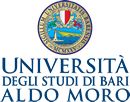A Study on Linguistic Sustainability in Italian Secondary Education: Language Biographies as a Tool for Understanding Learners’ Profiles
Abstract
The recommendations outlined by the Council of Europe (2022) concerning dropout rates among adolescent immigrant students in secondary education underscore an urgent need for sustainability in teaching Italian as a Second Language (ISL). As part of doctoral research in educational linguistics, this study aims to advance linguistic sustainability by comprehending adolescents’ perceptions and attitudes toward ISL within multilingual educational settings (Gardner et al. 1985). To this end, a Language Biography Questionnaire, adapted from the Language Experience and Proficiency Questionnaire (Marian et al. 2007), the Language History Questionnaire (Li et al. 2014), and the User’s Plurilingual Profile (Council of Europe 2011), was crafted and administered among 126 recently arrived immigrant students (11-20 years old), enrolled in 7 secondary schools of Northeast Italy. The questionnaire is an instrument for assessing learners’ linguistic backgrounds and ISL proficiency. The discussion will focus on the development of this tool and its effectiveness in reflecting on teaching and learning ISL.
Results from the survey indicate that Italian is perceived as valuable and attractive; nevertheless, it poses challenges as a second language for study purposes. Bengali, Chinese, Mandinka, and Wolof speakers demonstrate a heightened tendency towards social withdrawal in communication and interpersonal relationships.
Subsequently, the discussion will delve into practical future perspectives and structural measures to promote the sustainability of ISL instruction in secondary schools.
Parole chiave
Full Text
PDFDOI: https://doi.org/10.15162/1970-1861/2103
Refback
- Non ci sono refbacks, per ora.

